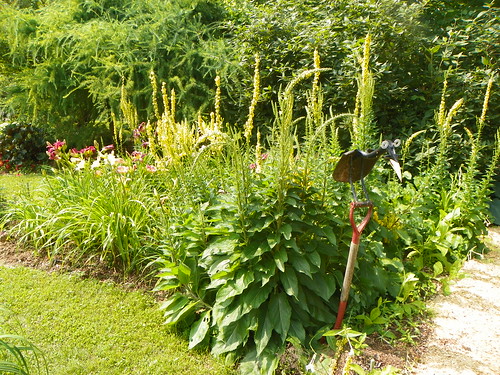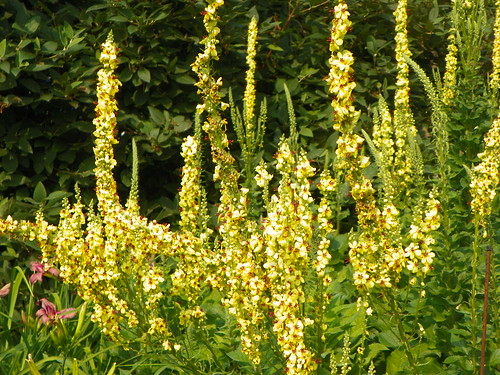
Here’s Joe Crow, perched before a backdrop of Verbascum nigrum, or Black (or Dark) Mullein. Just coming into full bloom now, Black Mullein is one of my favorite garden plants. Its large basal leaves are dark green, with small hairs that give the leaves a soft, velvety feel. They start out quite large near the earth, and grow smaller as they march up the stalk until they give way to flowers. Each flower is tiny, about half an inch across, but there are plenty of them as they densely line the stem. The flowers features yellow petals and purple filaments tipped with orange anthers. The tallest plants are a statuesque 5 1/2 feet in height. Verbascum nigrum is a biennial, but self-seeds freely, so there is always a good display of flowers.

Charming as they are, none of those features are what really draw me to verbascum nigrum, however. That would be the bees. They absolutely adore this plant. First thing in the morning, the flowers are alive with bees, getting on with their day’s work. I always take time to stand and admire them for a few minutes. They pay me no heed. They’re far too busy.
Here’s a short clip of the morning visitation.










